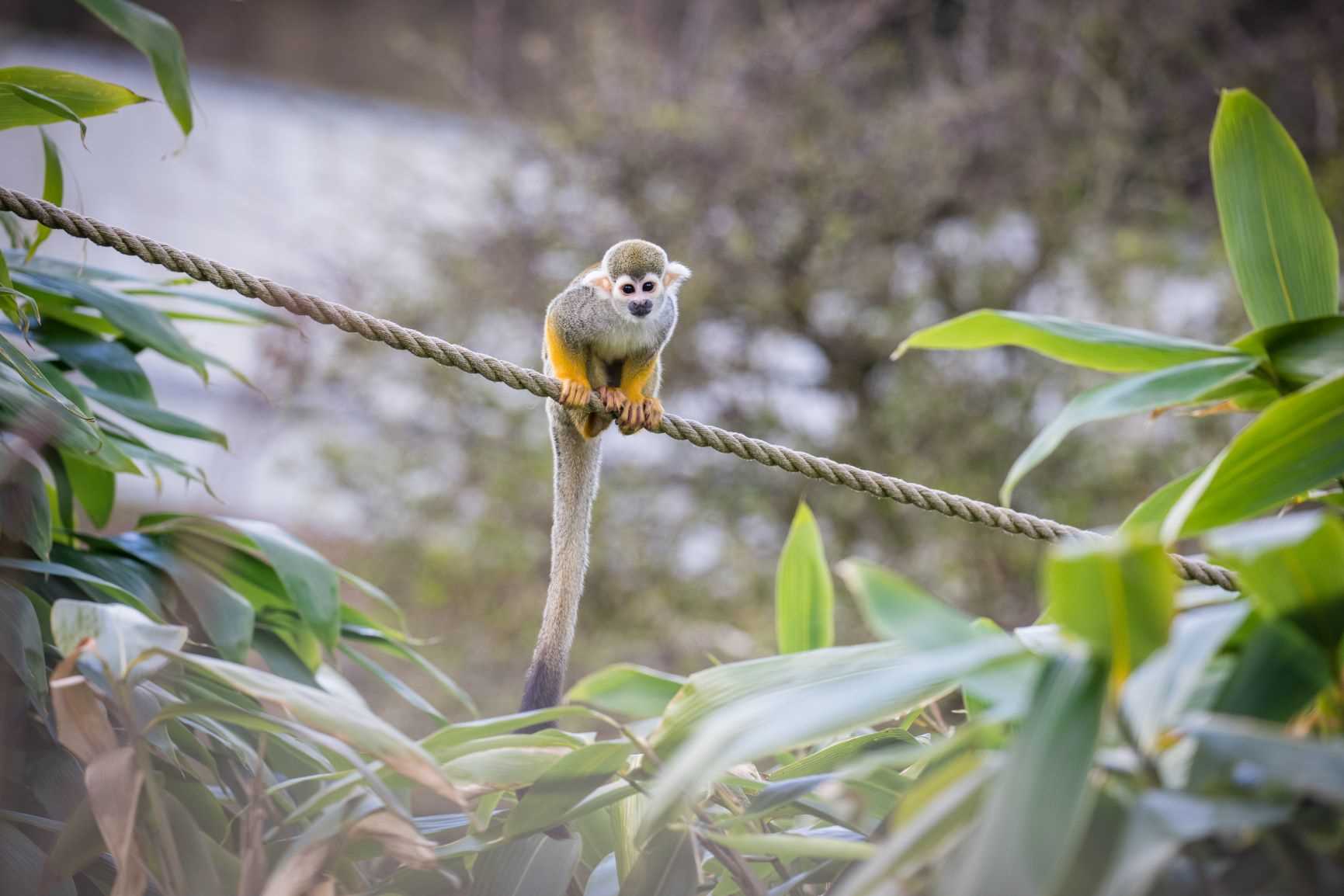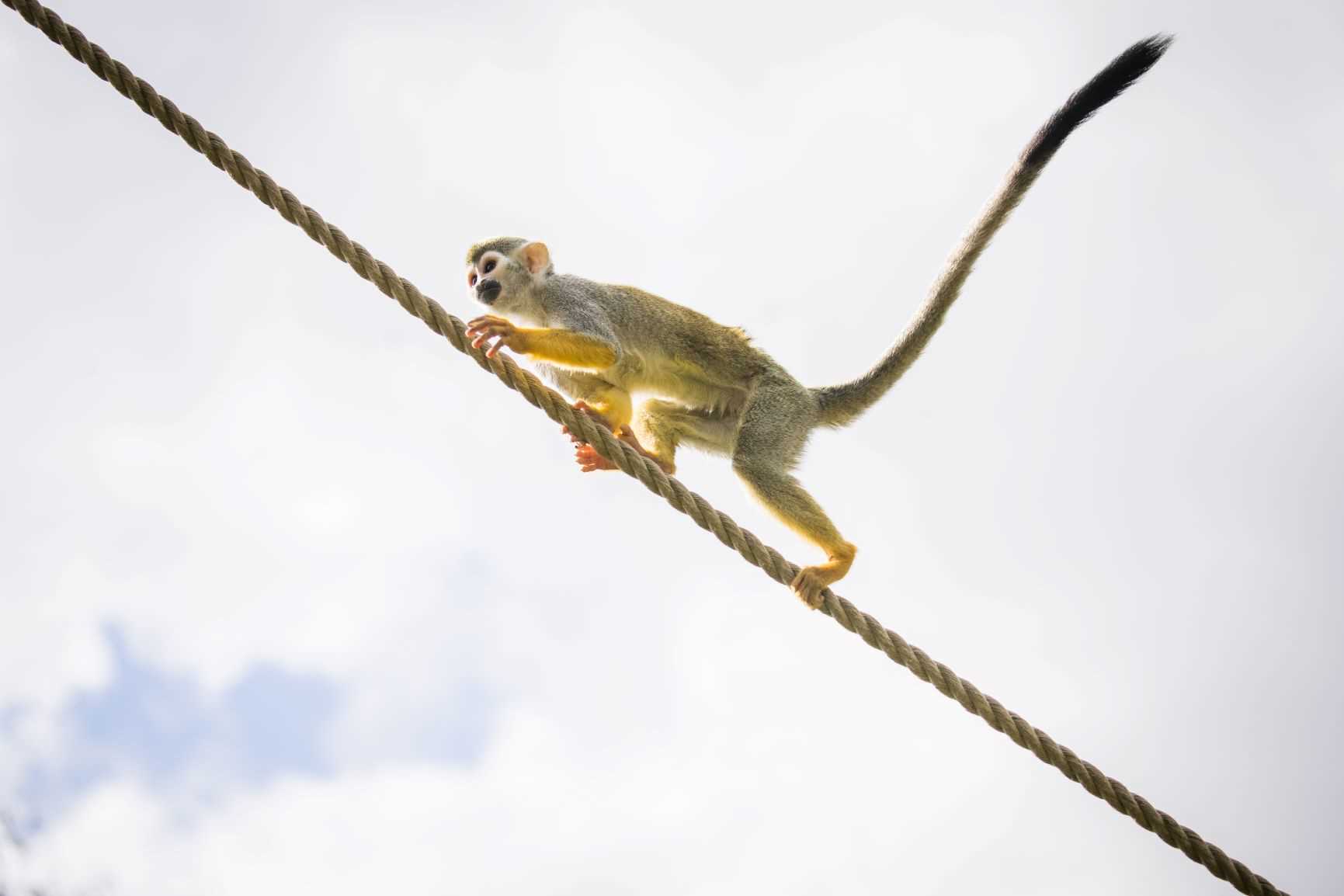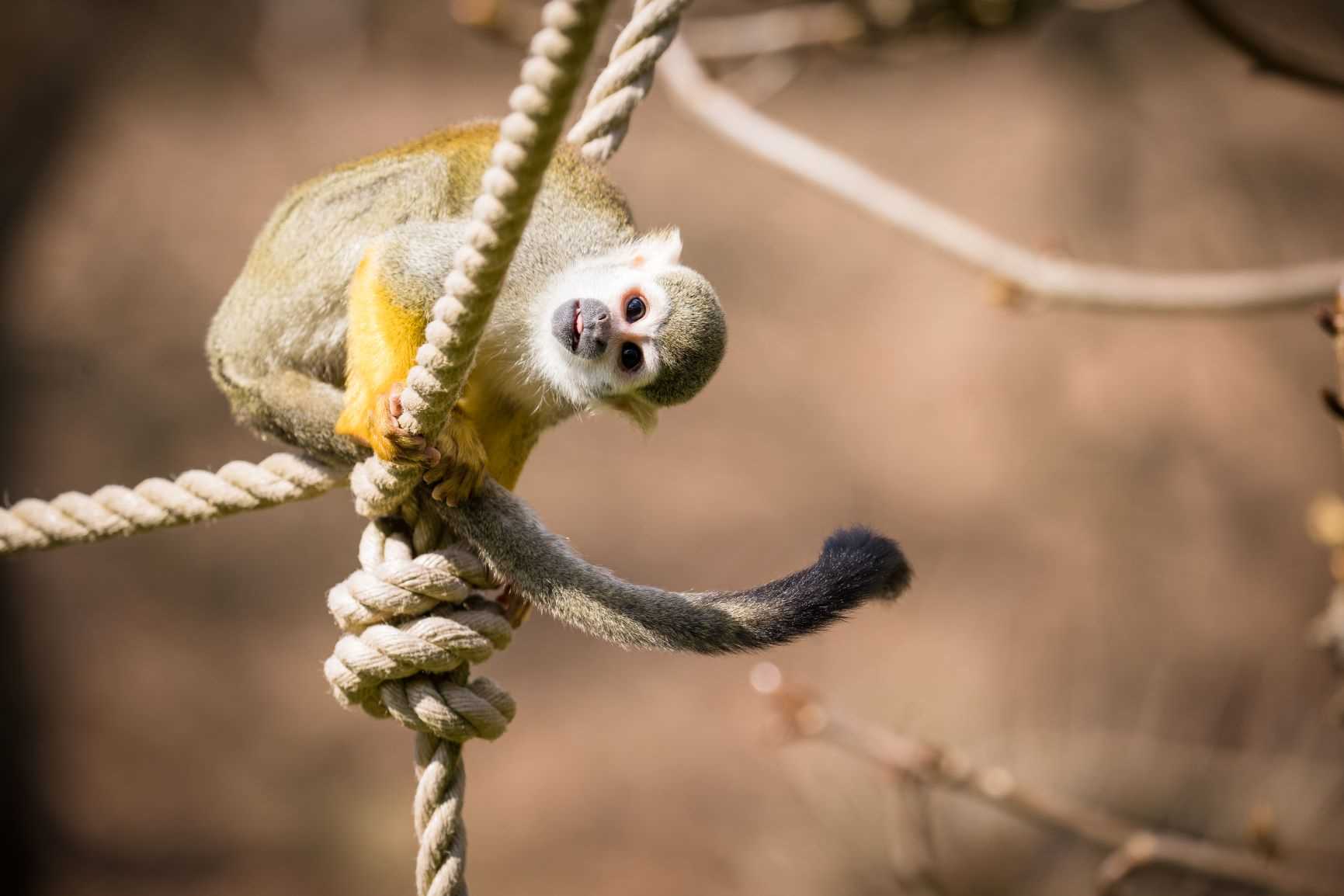Head to Monkey Mayhem, in the Foot Safari at Woburn Safari Park and you'll find the smallest of the primate family Cebidae, the Guianan squirrel monkey.
Often measuring under 37cm in height, these tiny mammals aren't endangered but their numbers are declining.

The reclassification of the species
The Guianan squirrel monkey is a species that was, up until very recently, known as the common squirrel monkey.
For many years before this, scientists thought that all squirrel monkeys belonged to the same species. However, following thorough genetic research initiated in 2009, several completely separate species of squirrel monkeys have now been identified.
This important discovery now guides how these animals are managed in captivity. It prompted a re-evaluation and saw all of the ‘pure’ individuals, now known as the Guianan population, identified.
As a result, there is now a European population of around 600 Guianan individuals.
Meanwhile, any unknown and hybrid animals were put on strict non-breeding recommendations. This distinction ensures the continuation of separate, healthy populations in the breeding schemes.

The Guianan squirrel monkey troop at Woburn Safari Park
The pure Guianan squirrel monkey breeding troop at Woburn Safari Park consists of a variety of ages, with some youngsters under a year old and some of the older ladies in their twenties!
The troop at the Park grew further in 2020 when three babies were born to experienced mums towards the end of the year. Another marker of success for this species as a whole.
The Guianan squirrel monkey is IUCN red-listed as Least Concern, however with numerous wild threats including deforestation, increasing infrastructure fatalities (caused by roads and power lines), and the pet trade, their numbers are still sadly declining.
Having a genetically healthy European population acts as a reassurance that if the numbers continue to fall we have backup populations for future reintroduction projects.

The EEP Committee
Hayley Potter, Head of Animal Encounters & Conservation, sits on the EEP committee for this species.
Speaking of the committee, she says: “It’s an extremely proactive committee that I am proud to be a part of. We assist the studbook keeper with recommendations, producing best practice guidelines and population management.”